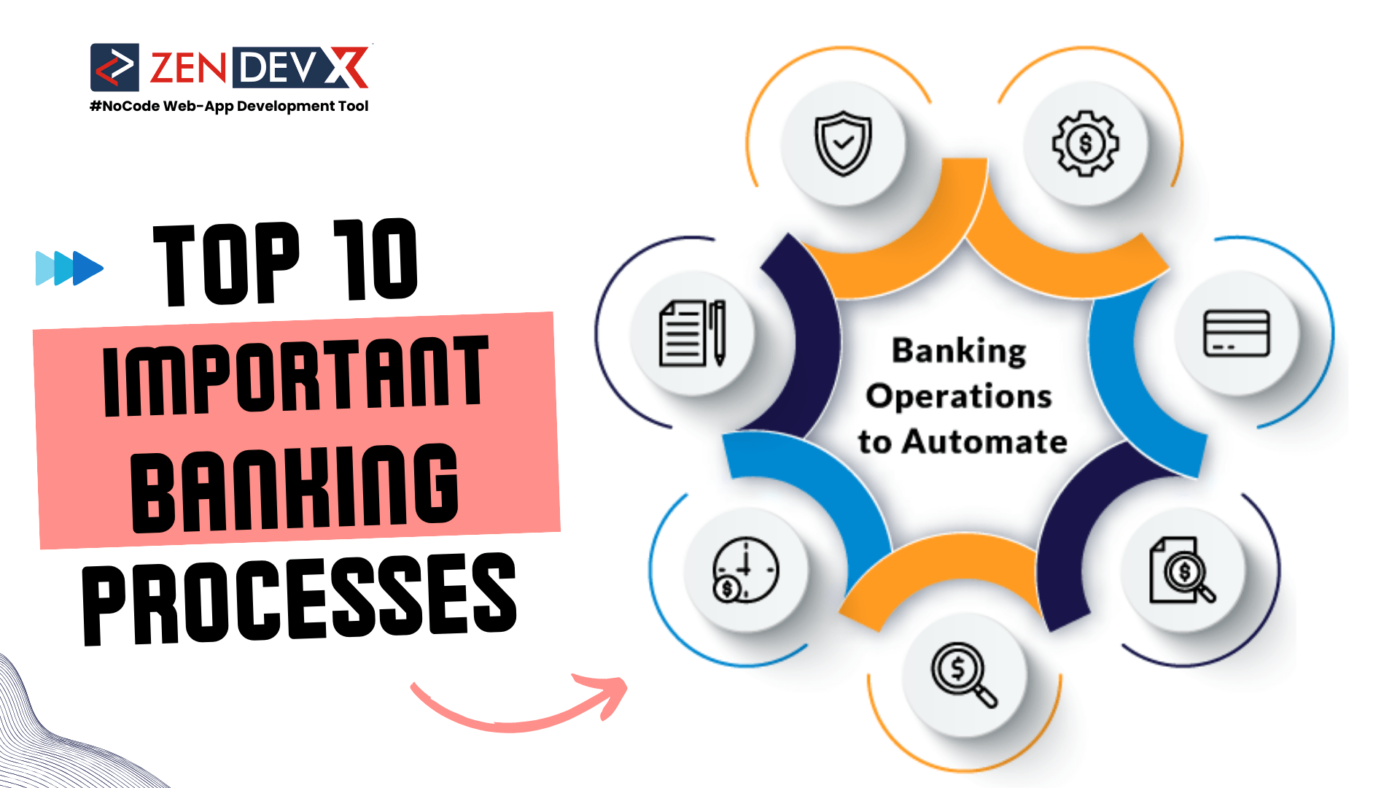According to a new analysis by Fortune Business Insights the market for RPA technology is predicted to rise dramatically while the overall process automation market is forecast to reach 7.64 billion USD in the next years. Robotic process automation (RPA), artificial intelligence (AI), machine learning (ML), and other innovative technologies are used in hyperautomation, one of the new trends in process automation, to automate and optimise complicated business processes. In banking among other industries, hyperautomation is becoming more and more popular as businesses look for ways to cut expenses, increase productivity, and improve customer satisfaction.
Particularly the banking sector provides a wide range of services made up of several front- and back-end operations that can profit from hyperautomation. Let us investigate how workflow management software can be used to automate and improve several banking sector procedures can be used to automate and improve a number of banking sector procedures.workflow management software.
Loan Processing and Validation
Banks can process and validate loans far more quickly and simply with hyperautomation. Workflow management software can extract pertinent data from sent papers, confirm its authenticity, and combine it with other documents to produce a due diligence report using machine learning and automation. Business-logic bots can alert clients to mistakes or inconsistencies, guaranteeing safer and more precise loan selections. Loan processing workflows become more effective and efficient when hyperautomation shortens processing times and removes human mistakes.
Know Your Customer (KYC)
One essential and required step banks take to confirm the identification of their clients is the KYC process. Banks may find KYC compliance to be expensive and time-consuming, nevertheless. By allowing workflow management software to be used for the gathering, filtering, processing, and validation of client information, hyperautomation provides a remedy. Banks can cut expenses, greatly lower the need for human participation, and better comply with security and regulatory requirements by automating these activities.
Credit Card Processing
Processing credit card applications normally takes a long time, which irritates customers. Bank credit card processing can be accelerated via hyperautomation. In a few hours, workflow management software can gather, validate, and perform background checks on a consumer, as well as determine their eligibility. Faster credit card processing made possible by automation of these chores helps banks retain and satisfy their customers.
Fraud Detection
Account Closure
Bank employees and consumers alike may find the liquidation of accounts to be a time-consuming and taxing operation. Utilising workflow management software, hyperautomation speeds up and streamlines the account closure process. These days, clients may shut their bank accounts by completing electronic forms that the automation software handles automatically. By automating, bank employees have less paperwork to do and the whole client experience is enhanced.
Mortgage Processing
Processing mortgages requires a number of complicated and time-consuming inspections and verifications. Bank mortgage processing may be expedited and streamlined by hyperautomation. Automation and algorithm-based technologies allow banks to speed up credit checks, employment verifications, and other required mortgage application procedures. This shortens processing times, lowers mistake rates, and improves mortgage processing workflow efficiency generally.
General Ledger
Tracking their financial data requires banks to keep accurate and current general ledgers. General ledger management accuracy and efficiency can both be increased by hyperautomation. Predefined rules included in workflow management software allow the general ledger to be updated automatically for obligations, assets, expenses, and revenue. Hyperautomation enables banks to quickly and error-free manage general ledgers by automating calculations and minimising human data entering.
Customer Service
Banks must provide timely and effective customer service. Chatbots and conversational AI are two ways that hyperautomation helps banks improve their customer service. Chatbots can be included into workflow management software to automate client requests, deliver prompt replies, and forward difficult questions to the relevant departments. Automation of customer care not only speeds up responses but also lightens the load on banking employees so they can concentrate on more intricate client problems.
Accounts Payable
Invoice management, data validation, and on-time vendor payment are all part of accounts payable (AP) operations. Banks’ AP procedures can be streamlined and optimised by hyperautomation. Optical Character Recognition (OCR) technology combined with workflow management software may validate, digitise, and extract data from bills, and credit suppliers’ accounts automatically. Automation of accounts payable processes lowers human labour, lowers mistakes, and increases efficiency.
Risk and Compliance Management
Operational banking depends heavily on regulatory compliance. Banks may find that hyperautomation helps to simplify risk and compliance management procedures. Automation of workflows allows one to design and specify compliance requirements, update them automatically in response to regulatory changes, and delegate work to pertinent parties. Through regular progress updates and openness, hyperautomation lowers compliance costs, strengthens regulatory compliance, and improves risk management procedures all around.
Summary
The banking sector gains greatly from hyperautomation since it automates and optimises a number of procedures. Hyperautomation is made possible by workflow management software, which also helps to lower expenses, increase productivity, and improve customer experience. Utilising the potential of hyperautomation, banks can satisfy regulatory requirements and maintain their competitiveness in a changing market.


